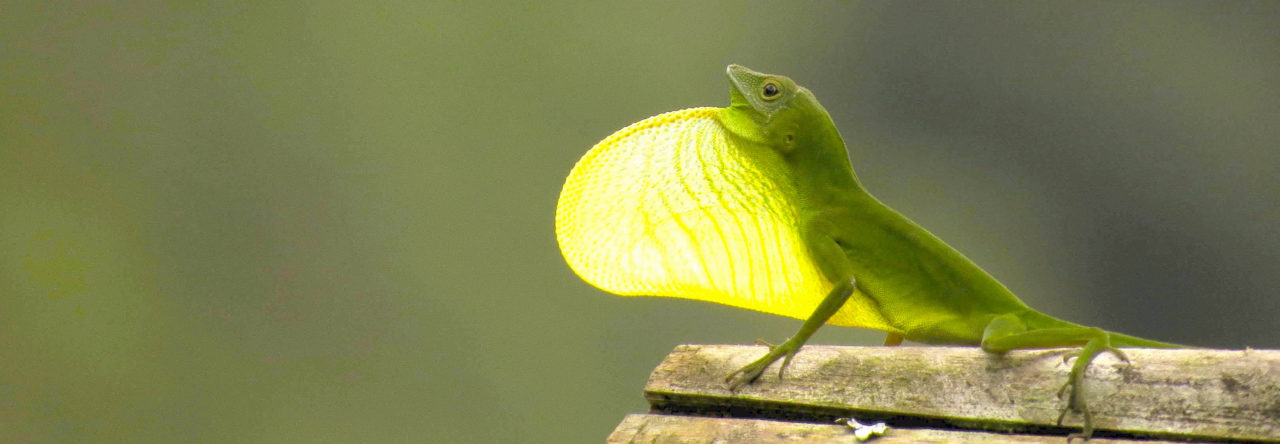 Robert Cox, from the University of Virginia, presented his work examining the relationship between fitness and body condition in Anolis sagrei from the Bahamas. Many evolutionary biologists want to understand selection in wild populations. But in order to do that we need to measure fitness. Finding out who survives to maturity, who finds more mates, and who produces the most viable offspring, however, is quite difficult. For this reason, many researchers use body condition, or the ratio of body mass to body size, as a proxy for fitness.
Robert Cox, from the University of Virginia, presented his work examining the relationship between fitness and body condition in Anolis sagrei from the Bahamas. Many evolutionary biologists want to understand selection in wild populations. But in order to do that we need to measure fitness. Finding out who survives to maturity, who finds more mates, and who produces the most viable offspring, however, is quite difficult. For this reason, many researchers use body condition, or the ratio of body mass to body size, as a proxy for fitness.
One of the issues with using body condition as a proxy, however, is that it varies a lot, even within the same individual! When resources are plentiful, even less fit individuals can fatten up. And, when the going gets tough, even vigorous individuals fare poorly. For his study, Bob wanted to know whether body condition was actually a good proxy for fitness. He did this by actually measuring fitness in the wild by tracking survivorship in A. sagrei from the Bahamas. Most studies examining survivorship are performed over a single season or a few seasons, but Bob managed to gather data for 41 estimates of selection over 10 years of work. The numbers are impressive: He tracked survivorship over the summer, which is the height of the reproductive season, for 4,608 adults from 7 populations.
What he found was surprising – it turns out that, in these populations of A. sagrei, fatter is not fitter. He found no evidence for selection favoring better body condition in males or in females. He did find, however, strong selection for body size, rather than body condition. He also found correlational selection on body condition and body size – Specifically, he found that body condition did matter, but only in really large males. But this effect only explained a small proportion of the residual variance. The selection on body size, he found, was much stronger.
Bob’s work emphasizes that we, as a community, need to be wary of the traits that we use as proxies for fitness. In the case of A. sagrei, it didn’t matter what condition the lizards were in, except in the case of larger lizards. However, survival is only one piece of the fitness puzzle. To know how body condition influences fitness, we would ideally also want to know whether fatter individuals gain more access to mates and produce more viable offspring (i.e., more fecund). Together, Bob’s work highlights the importance of body size in survivorship and provides new evidence that fitness proxies need to be experimentally verified before being widely applied.
- SICB 2018: Revisiting the Fitch-Hillis Hypothesis in Mexican Anoles - January 8, 2018
- Evolution 2017: Urban Anoles Sprint Faster on Smooth Substrates - June 26, 2017
- SICB 2017: New Insights into Pre- and Postcopulatory Selection in Anoles - January 10, 2017


Andrey Rusnak
Is this Anolis sagrei on the photo?
Martha Muñoz
Yes – it is. I plucked the photo from the Cox lab website.